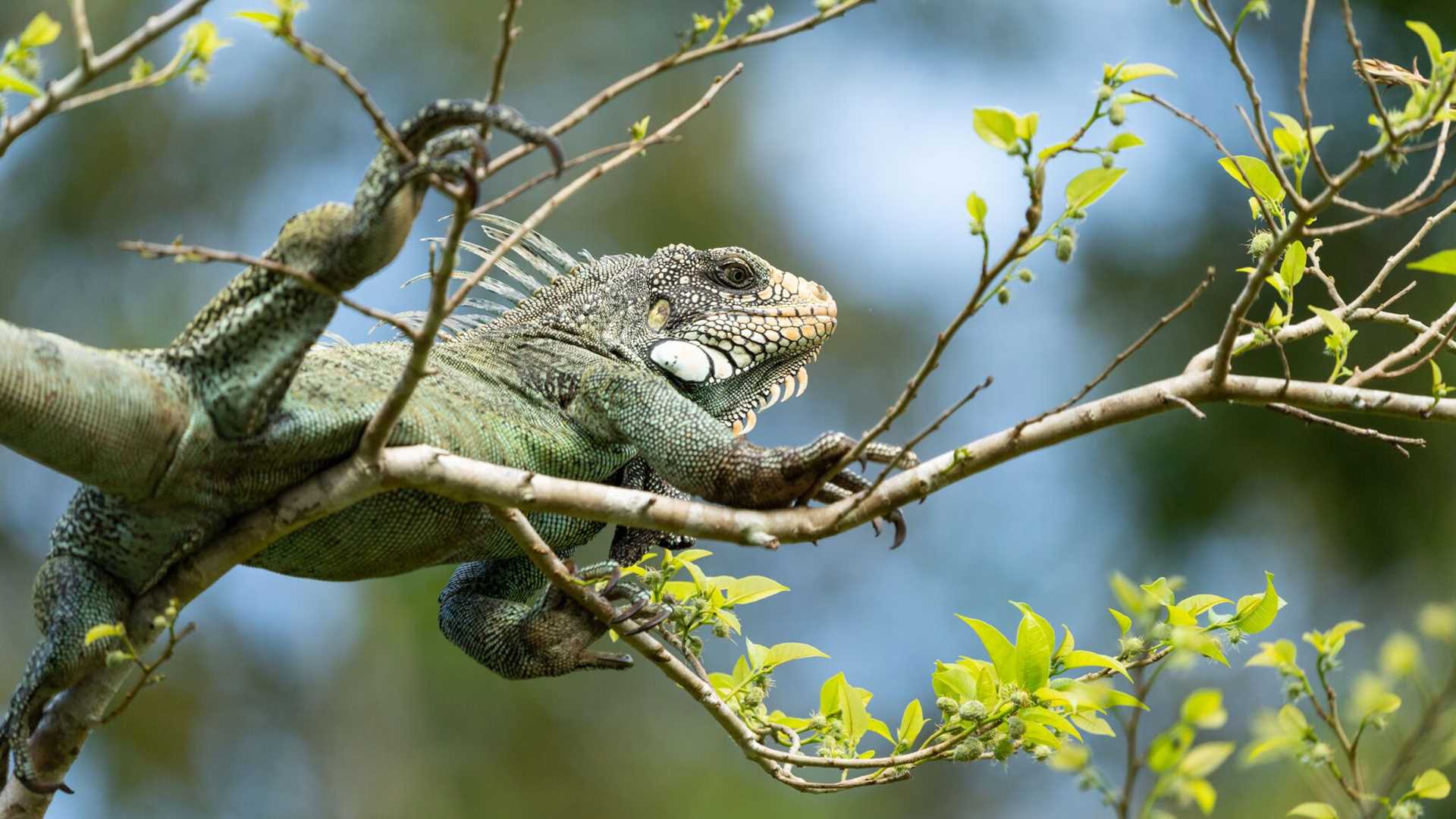Today was our first full day of exploration here on the Amazon after boarding Delfin II in Nauta, Peru yesterday. We disembarked via the skiffs for a short ride up the Marañon River to a trailhead near a small riverside community called San Regis. After disembarking, we boarded an improvised transportation system to cross a small lake–basically two canoes connected to form a catamaran. The more adventurous explorers in our group chose to take a long walk that involved a series of hanging bridges that form a network of walkways in the canopy. This offered a unique perspective of the multilayered forest, particularly the canopy. Guests on the shorter walk spent time learning about the forest and the plants in the shrub layer.
Midday, the ship moved to the small community of Nueva de Octubre, a new location on the Marañon River. After the bridge team found us a suitable tree to tie up the ship, we boarded skiffs and headed up the Nauta Caño Creek to search for wildlife. We had many memorable sightings of birds, including horned screamers, ringed kingfishers, tui parakeets, yellow-rumped caciques, black-collared hawks, and white jacamars.
One of the highlights was a green iguana that appeared to be sunbathing on a tree. These iguanas are mostly arboreal and mostly herbivorous. We observed the iguana’s long claws and the spines along its back. Swedish botanist Carl Linnaeus described the iguanas in 1758, and we learned that the origin of the name "iguana" was likely derived from the Taíno language name for the species: iwana. These iguanas have a large range that extends from Southern Mexico all the way to Northern Argentina.
We also observed many groups of squirrel monkeys, a three-toed sloth, and many saddleback tamarins.
Finally, just as it was time to return to the ship, one of the skiffs radioed to let us know that they spotted some night monkeys. This was definitely a highlight of our day, and we spent a few minutes observing three individuals, likely part of a family group. The monkeys were nestled into the hollow of a tree trunk, and they frequently looked down on us. We learned that these monkeys have a monogamous mating system.
Today was a fantastic first day exploring the impressive biodiversity of the region, and we are looking forward to continuing our adventure tomorrow.







